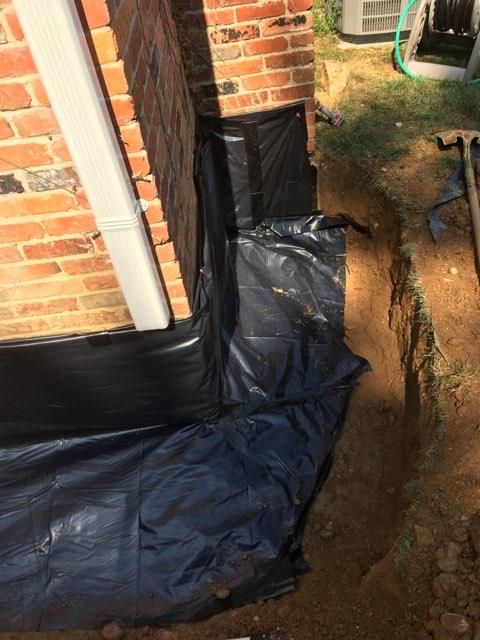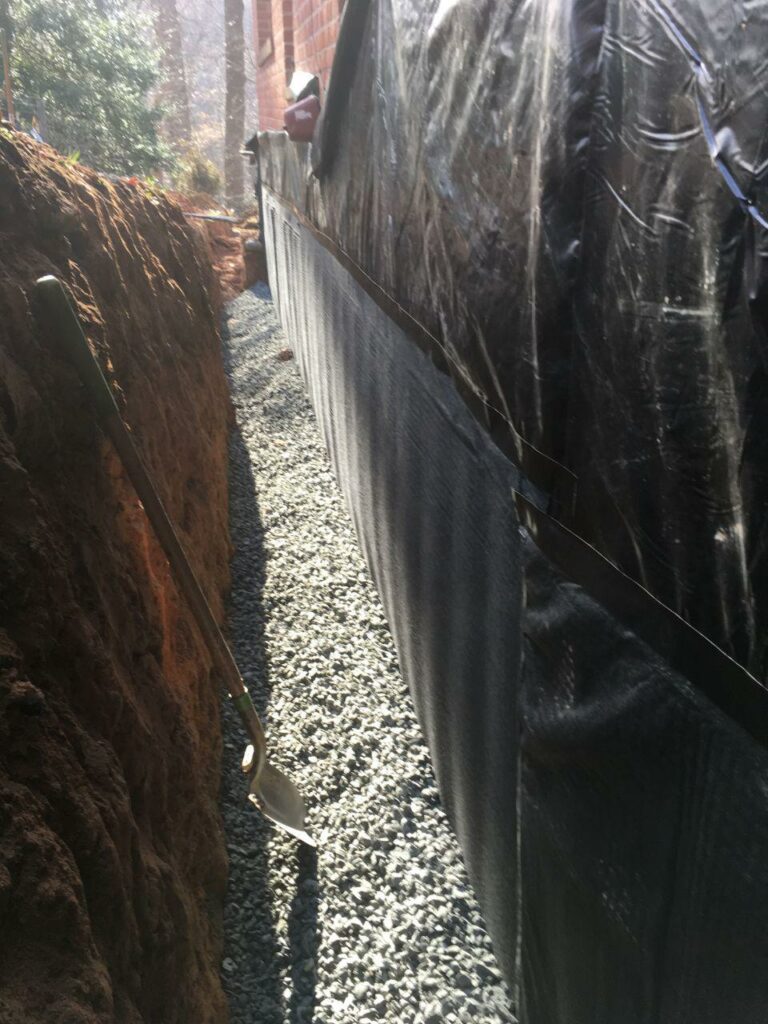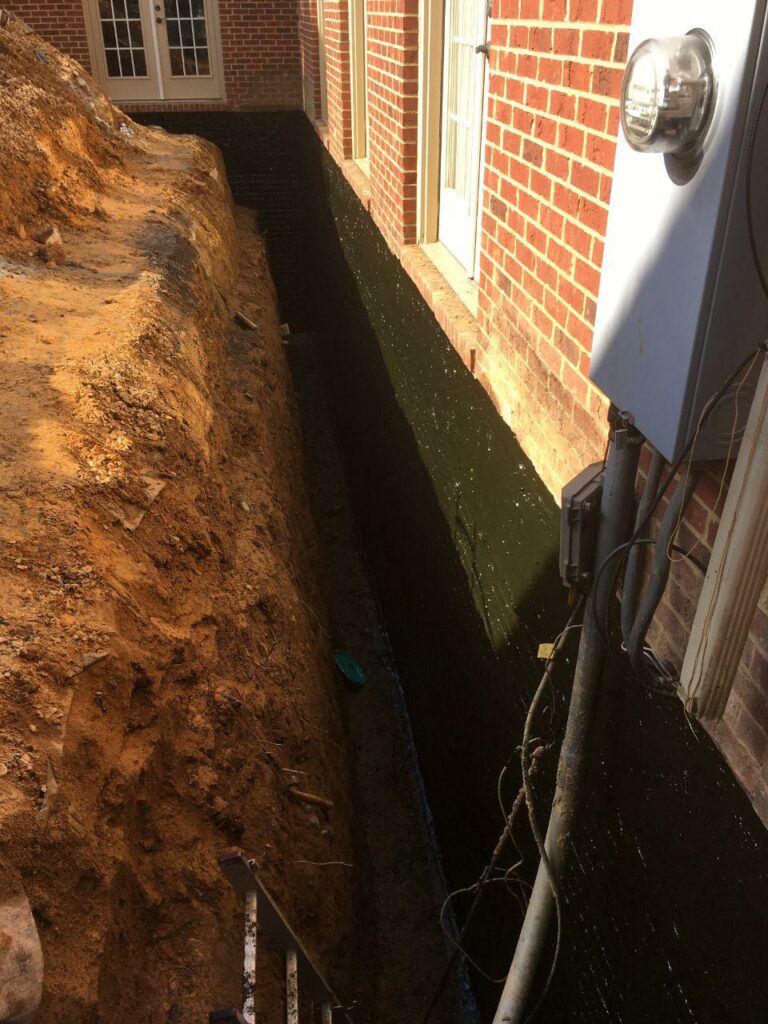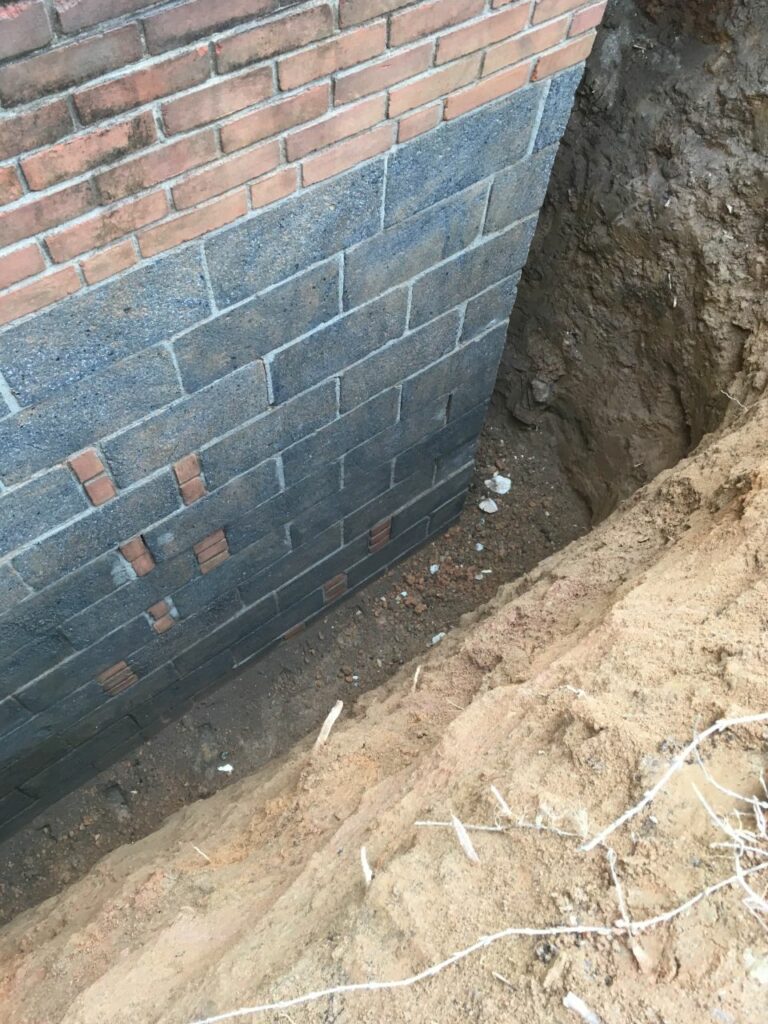We will be closed for Thanksgiving from November 24 through 25.




Water intrusion occurs for several reasons: vulnerabilities in the foundation or the walls, a rising water table, or due to topographical features (ex: natural springs damaging and eventually pushing water through the foundation). Costly structural repairs can eventually become necessary if leaks are not caught and sealed early enough. Years of elemental wear create eroded pathways where water makes it’s way further through the structure, eventually flowing into the house through an ever-growing conduit. If left without repair, damage such as bowing walls, molding, foundation instability, and settling walls can occur. All systems we install are guaranteed by structural engineers & covered by our DES warranty.
Outdoor Waterproofing
Our general procedure is tried and true – first, we seal or repair any damage, then we waterproof the wall from the outside, preventing any further issues. After excavating the damaged area, we clean off the wall to expose the entry points and create a clean surface that the waterproofing coating can adhere to. Once our trained supervisors inspect the walls, we pinpoint and seal the cracks/holes with hydraulic cement and other sealants. We then waterproof the entire walls with state of the art waterproofing coatings. Once the walls are waterproofed, we test the work and install new footer drains or restore existing footer drains when additional relief is necessary. We then install additional buried liner systems to eliminate pressure and moisture along the wall. Then we backfill the area with gravel and compacted soil to ensure the foundation’s immediate surroundings are more stable than before. This also supports the structural integrity of the walls, by alleviating hydrostatic pressure.
Indoor Waterproofing
We also have techniques to repair and seal walls from the inside if exterior excavation is not an option. Depending on what type of water intrusion is present, we have the ability to access interior walls and apply new waterproofing technologies to keep water out. Sealants create crystalline bonds to prevent water intrusion. This technique also involves scraping the wall coating off the cinder block wall and sealing any cracks before the product is applied.
If you don’t want to waterproof
Another option for a wet basement is an interior sump pump. Although this is not a fix, it does keep water off the floors. It is a good option if exterior excavation is not possible, and is particularly effective if the water intrusion is substantial. This option requires a channel to be cut along the walls leading to a sump pump through pipes. We then seal the channel back up with gravels and concrete. If an interior sump pump system is installed, we highly recommend a back-up battery sump as well to prevent intrusion if the electricity goes out, or the pump fails. We also install back-up battery systems to existing pumps.
Don’t hesitate to call us as soon as you notice any after intrusion into your house. We will inspect the area where the water is coming in and investigate all the possible causes of the intrusion. We will give you a full report with our findings and an approach to repairing the issues. On a typical waterproofing project, we also assess whether poor grading is contributing to your issues, improper or clogged downspout extensions, or other associated problems. We will address all issues we find in a comprehensive plan.
We haven’t found a problem we couldn’t fix, and waterproofing is our specialty.

2754 Cameron Road
Falls Church, VA
Phone: (703) 534-1949
WOLFTRAP ELEMENTARY SCHOOL 5K AND FUN RUN SPONSOR

2022© Drainage & Erosion Solutions. All Rights Reserved. Areas We Serve.